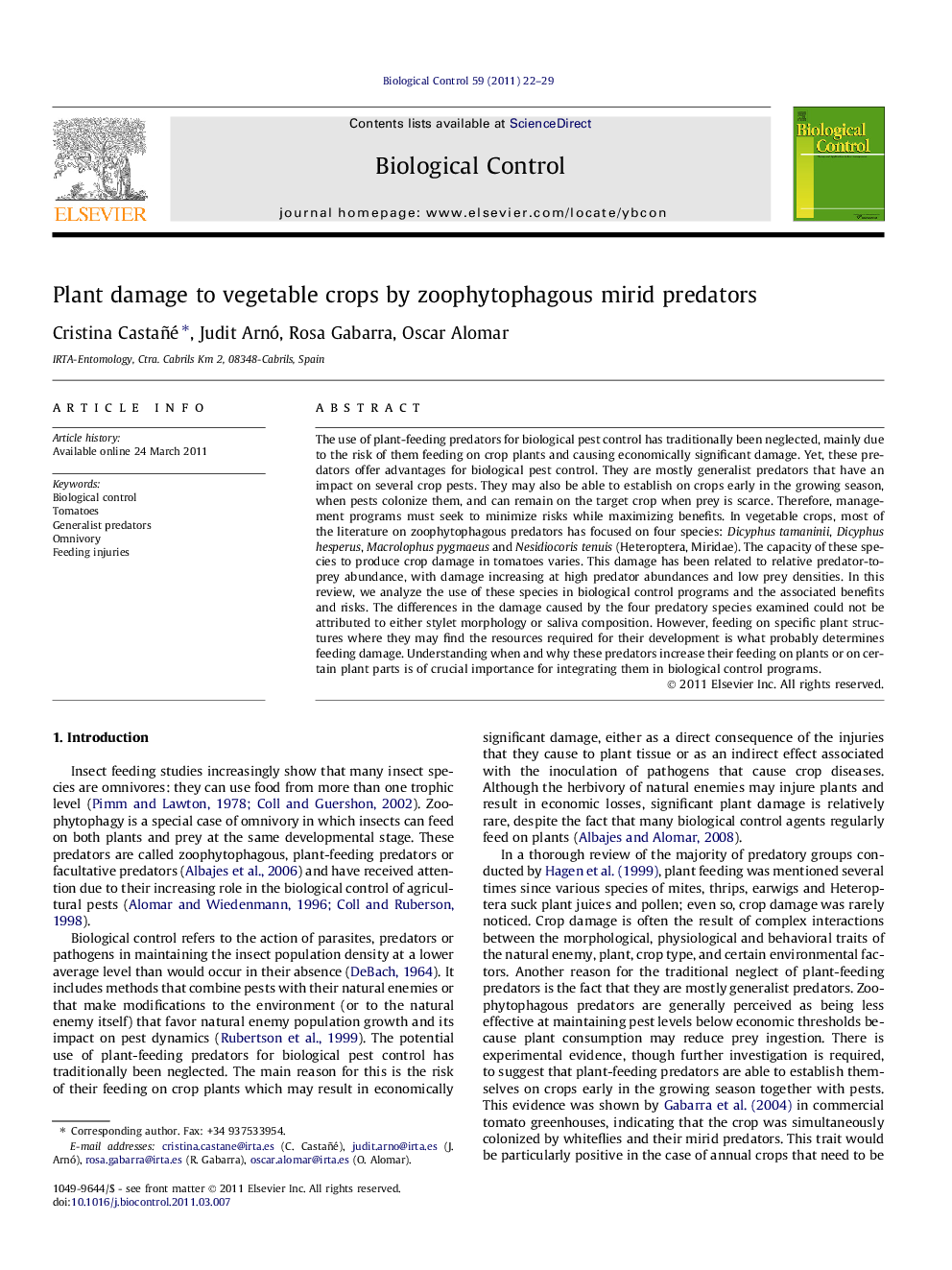| کد مقاله | کد نشریه | سال انتشار | مقاله انگلیسی | نسخه تمام متن |
|---|---|---|---|---|
| 4504180 | 1321076 | 2011 | 8 صفحه PDF | دانلود رایگان |

The use of plant-feeding predators for biological pest control has traditionally been neglected, mainly due to the risk of them feeding on crop plants and causing economically significant damage. Yet, these predators offer advantages for biological pest control. They are mostly generalist predators that have an impact on several crop pests. They may also be able to establish on crops early in the growing season, when pests colonize them, and can remain on the target crop when prey is scarce. Therefore, management programs must seek to minimize risks while maximizing benefits. In vegetable crops, most of the literature on zoophytophagous predators has focused on four species: Dicyphus tamaninii, Dicyphus hesperus, Macrolophus pygmaeus and Nesidiocoris tenuis (Heteroptera, Miridae). The capacity of these species to produce crop damage in tomatoes varies. This damage has been related to relative predator-to-prey abundance, with damage increasing at high predator abundances and low prey densities. In this review, we analyze the use of these species in biological control programs and the associated benefits and risks. The differences in the damage caused by the four predatory species examined could not be attributed to either stylet morphology or saliva composition. However, feeding on specific plant structures where they may find the resources required for their development is what probably determines feeding damage. Understanding when and why these predators increase their feeding on plants or on certain plant parts is of crucial importance for integrating them in biological control programs.
Plant-feeding predators offer many advantages for biological pest control. However, if feeding on crop plants causes damage, then management programs must seek to minimize risks while maximizing benefits.Figure optionsDownload as PowerPoint slideHighlights
► IPM must minimize risks associated to mirid predators while maximizing benefits.
► Injury by predatory mirids on vegetables cannot be related to stylet or saliva types.
► Feeding on specific plant parts seems to determine damage by omnivorous predators.
Journal: Biological Control - Volume 59, Issue 1, October 2011, Pages 22–29